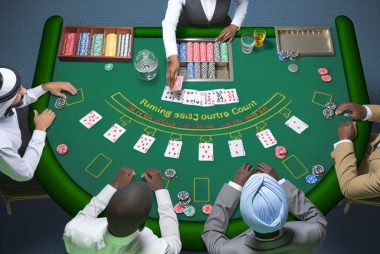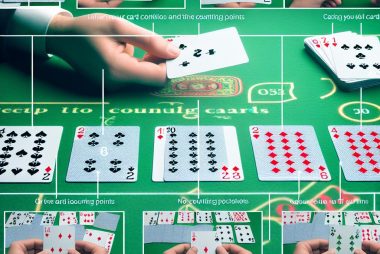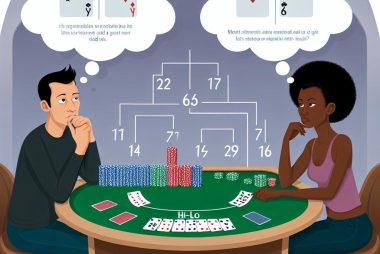How to practice card counting at home
Introduction to Card Counting
Card counting is a sophisticated strategy mainly associated with the game of blackjack. Its primary goal is to determine whether the upcoming hand will likely give an advantage to the player or the dealer. By keeping track of high and low cards during the game, players can make well-informed decisions, thereby increasing their chances of winning. For this reason, practicing at home is not just valuable but essential in becoming proficient and confident in this strategy.
Understanding the Basics
To get started with card counting, it’s fundamental to grasp the basics. The most widely used method is known as the High-Low system. This system involves assigning a specific value to each card. Cards 2 through 6 are valued at +1, which benefits the player since they are low cards. Cards 7 through 9 are neutral and thus valued at 0. On the other hand, cards 10, Jack, Queen, King, and Ace are valued at -1 because they give an advantage to the dealer. The core principle is to maintain a “running count” that updates as cards are dealt.
Setting Up a Practice Environment
To start practicing card counting at home, replicating a casino environment can significantly enhance your learning experience. Gather a deck of cards or multiple decks, as casinos typically use more than one deck in blackjack games. Designate a clear, quiet space at home where you can focus on shuffling, dealing, and counting cards without interruptions. This setup will help create an atmosphere conducive to honed concentration and skill.
Practicing the High-Low System
After setting up your practice area, begin by thoroughly shuffling the deck. Deal the cards one by one, keeping track of the running count with each card that you lay down. As you continue to practice, aim to boost both your speed and your accuracy. The objective is to maintain the correct count without making mistakes, refining your ability to do so increasingly quickly as you become more familiar with the system.
Additional Methods to Enhance Practice
To further refine your card counting skills, consider adding layers of complexity to your practice sessions. For instance, using a metronome can help regulate the speed at which you deal cards, simulating the pace of a live casino game. Additionally, online card counting simulators are available on several educational websites. These simulators often provide immediate feedback on your performance, helping you identify errors and correct them as you practice.
Understanding the True Count
In a real casino setting, decks are not shuffled after every round, making the concept of the “true count” very important. The true count is calculated by adjusting the running count in relation to the number of decks still in play. To determine the true count, divide the running count by the estimated number of remaining decks. Practicing to compute the true count at home is crucial because it directly affects your betting strategies. The true count provides a more precise measure of advantage and helps you decide how to adjust your bets accordingly.
Legal and Ethical Considerations
Before venturing into a casino with your card counting skills, it is imperative to understand the legal and ethical considerations. While card counting is not illegal, it is highly frowned upon by casinos. They may ask players suspected of employing card counting techniques to leave the premises. It is essential to carry out the practice with responsibility and be prepared for any potential consequences that may arise.
Additional Resources
Taking your card counting skills to the next level can be facilitated by utilizing a variety of additional resources. Several books provide deep dives into the nuances of card counting, offering advice on advanced strategies. Moreover, online courses can offer structured learning paths and rich materials to improve your skills. Websites dedicated to casino gaming can also be excellent sources of articles and guides, which can enhance your understanding (though these are not hyperlinked here). Utilizing these resources can help create a well-rounded approach to mastering the art of card counting.
By practicing diligently and responsibly at home, you can cultivate the essential skills needed to count cards efficiently and effectively. While this technique requires dedication and practice, mastering it can substantially enhance your strategy in blackjack. With time and persistence, you can build a skill set that not only elevates your game but also offers you more control over your potential winnings.




